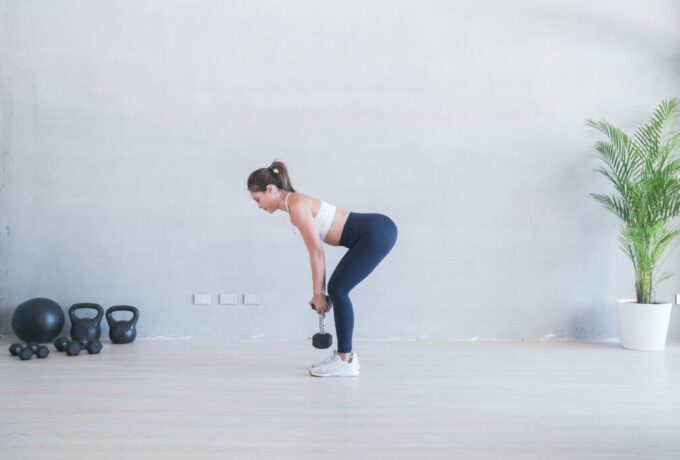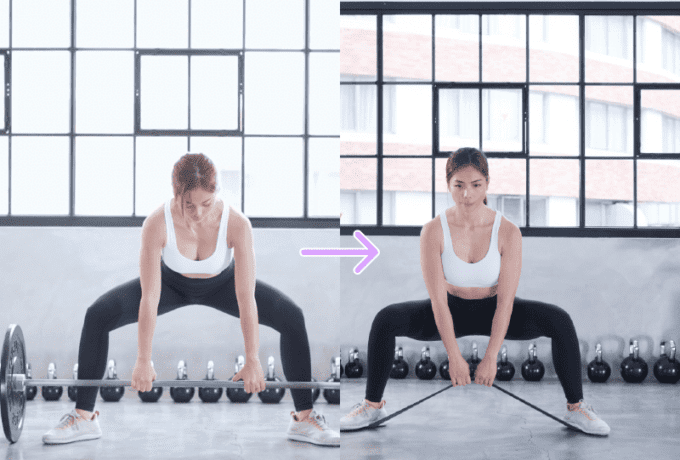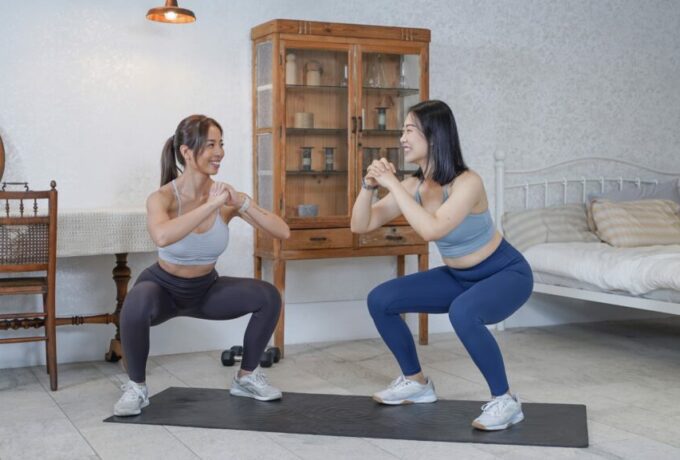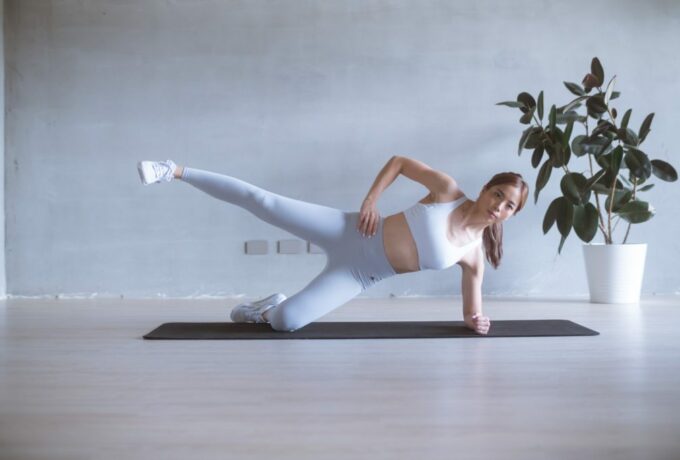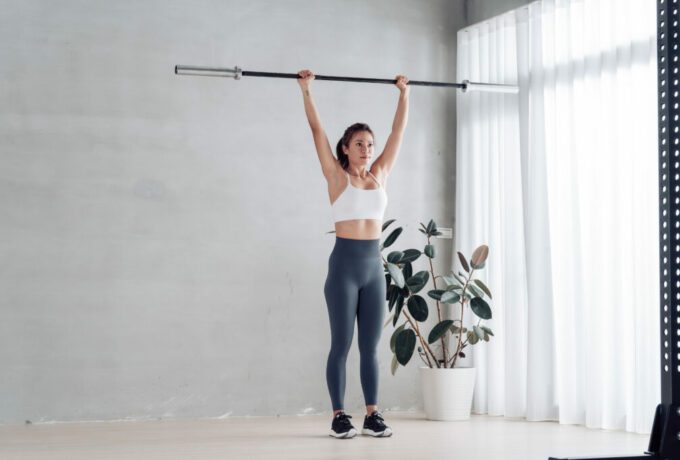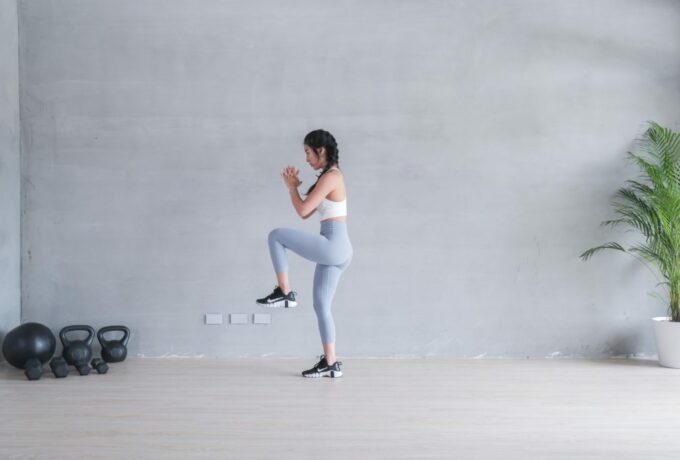Maybe you set a fat loss plan for yourself recently and you’re struggling with those intense cravings that kick in before your period. On top of that, you may feel unmotivated to exercise. You may also feel bloated. It may seem like your period is either stalling or ruining your fat loss progress. So how can you keep progressing towards your fitness goals around this time of the month? What’s the plan?
First of all, if you don’t really experience PMS and you feel fine on your period, then you can definitely follow your regular training program. Keep crushing goals!
For those that feel not-so-great before and during your period: Yes, you CAN still workout, but you don’t have to push yourself to go as hard this time of the month. You also don’t have to workout on days that feel like the end of the world. Skipping or scaling down your workout for a couple days is not going to ruin your fitness progress. In the long term, a few days of rest will more likely contribute to your recovery than take away your fitness gains.
With that being said, here are some tips that I believe will benefit your health and fitness before and during the week of your period/menstruation:
- Be kind to yourself
This is always easier said than done, but you really have to cut yourself some slack before and during your period. Your female hormones (progesterone and estrogen) both decrease leading up to your period. Know that your hormone levels are changing, and it’s totally normal if you feel unmotivated or negative at times. Try to focus on self care. Whether it is taking a hot bath, listening to your favorite songs, or watching a movie. Stressing yourself out can aggravate the symptoms that come with menstruation. Don’t beat yourself up if you skip a workout or indulge in a chocolate cookie. Instead, pay attention to how you’re feeling and do things that make you feel better physically and mentally! - Deload, rest, or stretch!
For many of us, this is the time to slow things down and prioritize recovery. This doesn’t mean that you should just lay on the sofa and watch TV all day. Instead, consider subbing your normal HIIT workout for a walk in the park or for a restorative stretching/yoga session. You can still follow your normal training program if you want to, but be extra cautious of injury and overall inflammation. I’d recommend that you avoid high intensity core exercises so that you don’t place additional stress on your abdominals or back. Personally, I like to do a follow-along yoga program such as the one shown below. Doing yoga makes me feel like I’m still making some progress towards my fitness goals, and my body always feels more refreshed and relaxed afterward.
- Prioritize nutrition
It’s common to experience cravings before and during your period. It’s easy to go all out and just abandon whatever nutrition/fitness plans that you’re on. It doesn’t have to be ALL OR NOTHING. Maybe you’ve deviated from your meal plan and indulged in a chocolate cake, but that’s not really going to “ruin” your nutrition plan unless you let that incident take over the rest of your day. Focus on consuming nutritious foods and forgive yourself if you give in to some of your cravings. I’ll also suggest you to slightly increase your daily caloric intake during this time. Also, if you are looking for some tasty and healthy recipes, check out our Nuli app for a variety of easy-to-make meals that will satisfy your nutritional needs and cravings!
Food to eat before and during your period
Fruits and veggies
Fiber will aid digestion and make you feel more satiated. The vitamins in fruits and veggies will help boost your immune system.
Complex carbohydrates
Choose complex carbohydrates (oatmeal, potatoes, sweet potatoes, etc.) over processed ones to stabilize your insulin and blood sugar levels.
Plenty of proteins
Consume protein from quality sources such as salmon, chicken, greek yogurt, and beef! Protein will keep you satiated and help offset some of those cravings. Shoot for 2.3-2.7 grams of protein per kilogram of body weight. If you weigh 50kg, try to consume 115-135 grams of protein before and during your period.
- Period weight gain and bloating
It’s common for our weight to fluctuate throughout our menstrual cycle. Your body tends to retain more water when your progesterone and estrogen level fluctuate.
Many women experience about 0.5kg to 3kg of weight gain leading up to their period. Some women may gain more simply because they are consuming more salt or because they are not sweating as much from workouts. Regardless, you have to know that period weight gain is TEMPORARY. Try not to jump straight into a diet when you see your weight increase leading up to your period. Track your weight periodically so you can notice any trends before you decide to make any dietary changes!
If you are feeling really bloated, be extra-mindful of your food choice, water consumption and sleep. Limit sodium intake and processed carbohydrates, since they bind to water in the body. Stay hydrated throughout the day and prioritize sleep at night. Do some yoga or light cardio to help with blood circulation and balancing body fluids.
We hope these tips can help you cope with some period-related problems. Remember to listen to your body and find the exercise program that suits your needs!
Start your 14-day free trial NOW and find the perfect program just for YOU!
References: https://pubmed.ncbi.nlm.nih.gov/6878471/


